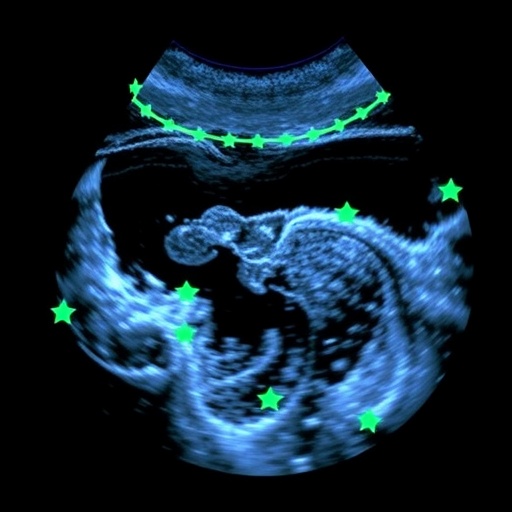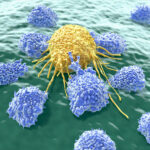
In a groundbreaking advancement at the intersection of acoustics and imaging science, researchers have unveiled a novel technique that dramatically accelerates the measurement and generation of ultrasound holography in air. This cutting-edge method leverages thermography integrated with camera-in-the-loop systems to reconstruct intricate ultrasonic wavefields in real-time, heralding a new era for applications ranging from non-contact imaging to enhanced human-machine interfaces.
Ultrasound holography, a process that captures three-dimensional acoustic wavefronts, has traditionally faced challenges in speed and resolution, especially in gaseous environments such as air. Conventional approaches typically rely on extensive sensor arrays or slow scanning methods, constraining their practical usability in dynamic scenarios. The latest research addresses these limitations by introducing rapid in-air measurement protocols that harness thermal imaging as a proxy for acoustic field mapping.
At the heart of this innovation lies the principle that ultrasound waves, when traveling through air, induce subtle temperature fluctuations on surfaces due to slight mechanical vibrations and convective heat transfer. By deploying high-sensitivity thermographic cameras capable of detecting minute thermal gradients, the research team effectively captures a spatial map of these temperature changes. This indirect thermographic reading becomes a powerful surrogate for direct acoustic pressure measurements, circumventing the need for cumbersome sensor networks.
.adsslot_E2BKnckMW1{ width:728px !important; height:90px !important; }
@media (max-width:1199px) { .adsslot_E2BKnckMW1{ width:468px !important; height:60px !important; } }
@media (max-width:767px) { .adsslot_E2BKnckMW1{ width:320px !important; height:50px !important; } }
ADVERTISEMENT
The incorporation of a “camera-in-the-loop” framework refines this process further. By feedback integrating the thermal imaging data in real-time, the system dynamically adjusts ultrasound emission patterns and processing algorithms, optimizing holography generation on the fly. This closed-loop setup enables the continuous synthesis and refinement of 3D acoustic images, making it feasible to monitor and interact with ultrasound fields without interrupting measurements.
One of the pivotal breakthroughs in this approach is the fusion of advanced computational models with empirical thermography data. Sophisticated algorithms interpret temperature distributions, converting them into high-fidelity ultrasonic field reconstructions. These algorithms employ inverse problem-solving methods, wherein the thermal data serve as boundary conditions, allowing the system to solve for the originating acoustic wavefronts. This synergy between physical sensing and computational inference significantly accelerates the holographic imaging process.
Practical demonstrations of this technology have shown remarkable success. The researchers adeptly resolved complex acoustic wavefronts emanating from phased ultrasonic arrays, achieving spatial resolutions previously unattainable with traditional air-based ultrasonic measurement setups. The rapid acquisition times also mean that transient phenomena, such as pulsed ultrasound bursts or modulated signals, can be visualized and analyzed in unprecedented detail.
Beyond the laboratory, the implications of this technology are manifold. In medical diagnostics, for example, rapid ultrasound holography could enable new forms of non-contact imaging or therapy monitoring by mapping acoustic fields generated in proximity to biological tissues without requiring direct contact. Similarly, in industrial settings, real-time ultrasound field visualization can provide enhanced quality control for materials inspection or fluid dynamics studies.
Another transformative application lies within the realm of human-computer interaction. Acoustic holography systems are increasingly explored for mid-air haptics—creating tactile sensations without physical interfaces. The ability to rapidly measure and iterate acoustic wavefields in air paves the way for more intuitive and responsive haptic feedback devices that rely on dynamic ultrasound modulation.
Technically, the use of thermography circumvents the inherent challenge of detecting ultrasonic waves in air, where traditional microphones lack the spatial resolution needed for holography, and microphones arrays become prohibitively complex. Thermal imaging benefits also include non-intrusive measurement modalities and the capacity to capture a wide field of view simultaneously, providing a holistic picture of the acoustic environment.
The research team also tackled environmental variables such as air currents and ambient temperature fluctuations, which could otherwise introduce noise into the thermographic measurements. Adaptive filtering techniques and environmental calibration routines were integrated into the system to maintain measurement fidelity, further ensuring the robustness of the holography generation.
Furthermore, this methodology, rooted in an elegant cross-disciplinary approach, exemplifies the power of integrating physics-based sensing with modern computational imaging. It reinforces a broader trend in engineering and applied physics, where indirect measurements combined with sophisticated algorithms yield insights far beyond previously possible direct measurement techniques.
Looking ahead, the researchers anticipate their approach will serve as a foundation for even more advanced ultrasound holography systems incorporating machine learning to enhance reconstruction speed and accuracy further. These future iterations could unlock fully real-time 3D ultrasound holography not only in air but also adaptable to other gaseous or fluid media, greatly expanding the range of practical applications.
Moreover, the marriage of thermography and ultrasound holography opens intriguing possibilities for multiphysics imaging—simultaneously probing thermal, acoustic, and mechanical dynamics for comprehensive material or biological characterization. Such multimodal capabilities might yield unprecedented diagnostic tools for medicine, materials science, and fluid mechanics research.
In a wider scientific context, this advance challenges the traditional paradigms of sensing and measurement in acoustics. By exploiting secondary physical effects (thermal variations) to infer primary phenomena (acoustic wavefronts), it charts a novel conceptual framework that may inspire analogous approaches across diverse domains such as electromagnetics, structural health monitoring, and environmental sensing.
This breakthrough was documented in a recent publication by Morgan, Cho, and Subramanian, appearing in the 2025 volume of Communications Engineering. Their work meticulously details the experimental setups, algorithmic frameworks, and validation results underpinning the rapid in-air ultrasound holography measurement enabled by thermography and camera-in-the-loop configurations.
The study exemplifies how multidisciplinary expertise—spanning thermal imaging, acoustics, computational algorithms, and system integration—can coalesce to solve longstanding measurement challenges. It is a compelling demonstration of how innovation at the intersections of established fields can unlock new technological frontiers that have significant real-world impact.
The prospects unlocked by this technique extend well beyond current applications, hinting at an era of acoustic imaging and control that is simultaneously faster, more detailed, and far more adaptable to real-world conditions. As further developments and refinements emerge, this work lays critical groundwork for ultrasound-based technologies that may revolutionize not only engineering and science but also everyday human experiences involving sound and touch.
In conclusion, the integration of thermography with dynamic camera-in-the-loop processing presents an elegant and efficient solution to the problem of rapid ultrasound holography in air. This innovation not only accelerates the acquisition of complex acoustic wavefield data but also opens avenues for novel applications in medicine, industry, and interactive technology. With such foundational advancements, the future of acoustic holographic imaging stands poised at an exciting threshold, promising capabilities that were once considered unattainable.
Subject of Research: Rapid in-air ultrasound holography measurement and camera-in-the-loop generation using thermography
Article Title: Rapid in-air ultrasound holography measurement and camera-in-the-loop generation using thermography
Article References:
Morgan, Z., Cho, Y. & Subramanian, S. Rapid in-air ultrasound holography measurement and camera-in-the-loop generation using thermography. Commun Eng 4, 101 (2025). https://doi.org/10.1038/s44172-025-00439-w
Image Credits: AI Generated
Tags: acoustic wavefield reconstructionadvanced imaging technology developmentsdynamic imaging in gaseous environmentsenhanced human-machine interfacesinnovative acoustics researchnon-contact imaging applicationsrapid in-air measurement protocolsreal-time ultrasound holographysensor-free ultrasound measurementthermal gradient detectionthermographic imaging techniquesultrasound wave temperature fluctuations



